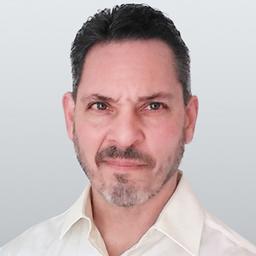In recent years, the United States has faced a shortage of primary care physicians, also called family doctors. This issue has far-reaching consequences for the health care system, and the shortage is expected to become more severe in the coming years.
2 Factors Increase Strain on the Health Care System
A September 2022 report from the Kaiser Family Foundation (KFF) noted that nearly 98 million Americans live in a primary-care health professional shortage area.Aging Population
One factor is the aging of the population. As the baby boomer generation ages, they require more medical care, and this demand for care is not being met by an adequate supply of primary care physicians.Low Insurance Coverage
Another factor is the low reimbursement rates for primary care services.Insurance companies often pay less for primary care services than they do for specialty care. This means that primary care physicians earn less than their specialist counterparts, which makes the field less attractive to medical students.
“I think the issue with primary care in general—and that includes pediatrics, family practice, internal medicine—” said Strange, “—starts first and foremost with respect for the field, for the expertise, for the knowledge base.
“I think, as we’ve developed specialists over the last 40 and 50 years—with all due respect to them, because I believe specialists have an important role—” he continued, “—it has in some ways diminished the luster of what primary care really is and was, which was the conduit to basic wellness and family medicine and being part of the fabric of your overall general health.”
Strange believes there is a “disconnect” in hospitals, where hospitals have disrespected primary care values and favored “high ticket items” that bring in revenue to the hospital.
Consequences of Delayed Treatment
A shortage of primary care physicians has significant effects on the health care system, one of the most obvious being that patients often have to wait longer to see one.This can lead to delays in diagnosis and treatment, which in some cases has serious consequences. Patients may also be forced to seek care in emergency rooms, which is more expensive and can lead to overcrowding.
Solutions
To address the shortage of primary care physicians, several potential solutions have been proposed.One solution is increasing the number of primary care physicians produced by medical schools.
This could be done by offering financial incentives to medical students who choose to pursue careers in primary care. Another solution is to increase the reimbursement rates for primary care services. This would make the field more attractive to medical students and practicing physicians.
“I think we need to go back to the medical schools at the first-year level and you need primary care doctors like myself explaining why I feel it’s so rewarding to be a primary care doc,” Strange said.
However, there is much more to choosing the path of a family physician than money, and Strange quit a more profitable career in gastroenterology to become a primary care provider.
Telemedicine Helps Increase Access to Care
Telemedicine is another potential solution.Using technology, family doctors can connect with patients remotely, which could help address the primary care shortages in some areas. Telemedicine can also be more convenient for patients, as they can receive care from the relative comfort of work or their homes.
“[Telehealth] is a huge benefit,” said Strange. “If there’s anything that came out of COVID, telehealth showed that it has real potential.”
When asked if it should it become the next level of care, he said no.
However, he does believe it has great value in terms of reviewing medications—where you don’t have to physically see a patient—or for certain basic, acute-care situations like was seen with COVID.
“To this day, I’m still not bringing a COVID patient to my office and exposing my staff,” said Strange. “I’ll do it by telehealth, and prescribe the medications as I see fit.”
He emphasized that telehealth has the potential to increase access to health care while improving quality of life for both doctors and patients.
“From a physician[’s] side, I can be on vacation and do this,” he explained. “I can be home at night after dinner with my family doing this, and then be reimbursed for the time I’m putting in.”
Lastly, it maintains a personal level of care for patients.
“Instead of sending patients to urgicenters all the time, which have a role and a place, if I know the patient well, and I know I can do that via televisit, isn’t that better care?” Strange noted.
But how can people who are having great difficulty accessing a regular family doctor get the care they need?
- Ask friends, family members, neighbors, or coworkers if they have a doctor they like.
- If you need a new provider because yours is retiring or moving, ask him or her for a recommendation.
- Call your health insurer and ask for a list of nearby doctors who accept your plan, or check your insurer’s website.
“Depending on where you live, I think going to your local medical societies, going to your local hospitals, where a lot of the primary docs have been aggregated into groups in a hospital setting, I think that’s the place to turn,” he advised.





